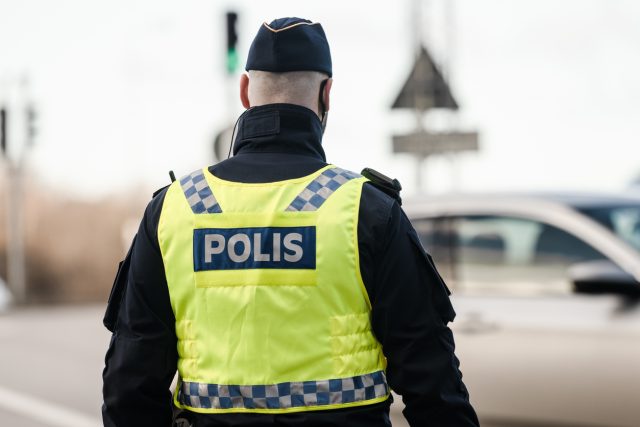
Now in February, the highest police chief in Sweden presented new calculations on how many people are part of criminal clans and gangs. The volume has doubled since previous estimates. At the same time Sweden continues to have one of the smallest police forces in Europe.
Violence is becoming increasingly present in Sweden. The murder rate by gun violence are significantly higher than in other countries. The number of bombings is increasing, as homes are exposed to detonations in the form of hand grenades or home-made bombs. This as a way for criminal gangs to alert and intimidate a target, while a large number of non-involved members of the public have their homes destroyed. So far, the blasts have mainly resulted in material damage, but a 25-year-old woman was killed in her bed in her home when it was hit by shrapnel from a bomb in the neighboring house.
The Swedish people demand that politicians take the increase in crime seriously.
This issue was a decisive factor when the previous Social Democratic government lost power in the 2022 parliamentary elections.
Swedish law has taken pity on the criminal
The current government, which consists of center-right parties (EPP / RE) with the support of the Sweden Democrats (ECR), has now been in power for a year and a half. A very extensive legislative work has been initiated to strengthen laws and penalty scales. A number of these have begun to be implemented. For example, possession of an illegal firearm now means at least 4 years in prison for serious weapons offences, compared to 2 years previously.
Sweden has had a criminal law that put the criminal’s rehabilitation at the center, which has meant that the punishments have been very lean and weak in Sweden. Criminals have also received various “discounts”. Through a quantity discount, the penalty has become lower, the more crimes committed. A rapist accused of 26 rapes received a total of 6 years in prison, which is within the scope of one aggravated rape.
Young people receive heavy discounts on the punishment. Anyone under the age of 18 receives a maximum of 4 years of youth care, even if convicted of a bestial premeditated murder carried out in the middle of a shopping mall among families with children.
On top of this, anyone who is sentenced to prison may leave the institution early if they have not misbehaved.
Now the focus will be on the victims of crime
The new government is now carrying out a historically extensive rewriting of Swedish criminal law. It should no longer be the criminal’s well-being and woe that is in focus. Legislation must put crime victims at the center and impose penalties that create redress for those affected.
This will mean significantly harsher punishments in the future. The Correctional Service has presented the basis for what is needed. From around 5,000 prisoners, they need to be able to accommodate 35,000 prisoners in ten years.
Sweden must start locking up criminals, if the spiral of violence is not to continue.
The decisive reason for the increased violence is the extensive migration to Sweden from regions of the world characterized by a lot of violence. Sweden now has criminals with a capacity for violence that the country has never seen before.
The police are constantly at a disadvantage
The government has also replaced the top police chief, as the previous one was considered to be doing left-wing politics by not being tough on crime. A former Social democratic police chief expressed grief over a killer who hacked to death a woman in a refugee accommodation: “What has that poor thing been through?” He showed no sympathy for the murder victim, but wondered what life would be like for the murderer. It became a quote that has often been used to show the mentality that the left-wing parties in Sweden have, and that has allowed criminality to expand across all latitudes.
The new police chief, Petra Lund, recently and with the Minister of Justice at her side, presented new estimates of how extensive organized crime have become in Sweden
A total of 62,000 people is assumed to be involved. Of these, 2,000 are leading figures and 12,000 are full-time active in the gang environment. In addition, 48,000 who are helpers by managing logistics such as transport and storage of criminal goods and weapons.
This can be compared to Sweden having 23,000 police officers. There are almost three gang criminals for every police officer. And the police have many more tasks to attend to than hunting gang criminals. Traffic surveillance, common disturbances and serious violence carried out by other individuals.
Sweden has 209 police officers per 100,000 inhabitants, which can be compared with the EU countries’ average of 335 police officers per 100,000 inhabitants.
These figures show two things: Sweden is very poorly prepared to receive large volumes of migrants from violent regions. And Sweden has been a country where the police force could be small because the citizens behaved well to a great extent.
Unfortunately, that is no longer the case. The migration policy that has been pursued has been disastrous for the security of the Swedish people.



 Subscribe
Subscribe